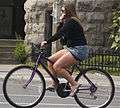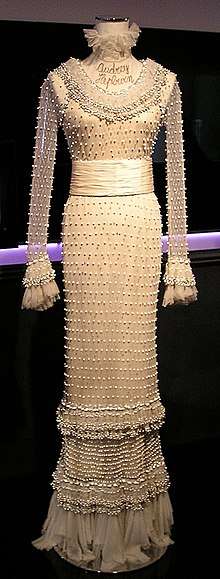Casual wear
Casual wear (casual attire or clothing) is a Western dress code that is relaxed, occasional, spontaneous and suited for everyday use. Casual wear became popular in the Western world following the counterculture of the 1960s. When emphasising casual wear's comfort, it may be referred to as leisurewear.
| Part of a series on |
| Western dress codes and corresponding attires |
|---|
|
|
|
Casual (anything not above) |
|
Supplementary alternatives
|
|
Legend: |
While casual is "informal" in the sense of "not formal", informal attire traditionally refers to a Western dress code associated with suits - a step below semi-formal attire - thus being more formal than casual attire.[1]
Overview
With the popularity of spectator sports in the late 20th century, a good deal of athletic gear has influenced casual wear, such as jogging suits, running shoes, and track clothing. Work wear worn for manual labor also falls into casual wear. Basic materials used for casual wear include denim, cotton, jersey, flannel, and fleece. Materials such as velvet, chiffon, and brocade are often associated with more formal clothes.[2]
While utilitarian costume comes to mind first for casual dress, however, there is also a wide range of flamboyance and theatricality. Punk fashion and fashion of the 1970s and 1980s is a striking example. Madonna introduced a great deal of lace, jewelry, and cosmetics into casual wear during the 1980s. In the 1990s, hip hop fashion played up elaborate jewelry and luxurious materials worn in conjunction with athletic gear and the clothing of manual labor.
Men
Jeans, dress shirt (casually turn down collared), and a T-shirt or sleeveless shirt are typically considered casual wear for men in modern times.[3][4]
Women
Casual wear is typically the dress code in which forms of gender expression are experimented with. An obvious example is masculine jewelry, which was once considered shocking or titillating even in casual circles, and is now hardly noteworthy in semi-formal situations. Amelia Bloomer introduced trousers of a sort for women as a casual alternative to formal hoops and skirts. The trend toward female exposure in the 20th century tended to push the necklines of formal ball gowns lower and the skirts of cocktail dresses higher. For men, the exposure of shoulders, thighs, and backs is still limited to casual wear.
Gallery

 A U.S. artist wearing a casual minidress during a public interaction.
A U.S. artist wearing a casual minidress during a public interaction.
 A model in T-shirt and cargo shorts.
A model in T-shirt and cargo shorts. Model in jeans and a military-style shirt.
Model in jeans and a military-style shirt.
References
- "Casual dictionary definition | casual defined". www.yourdictionary.com.
- "Material Chart". January 12, 2014.
- "Casual Dress for Young Men: What to Wear & How to Wear It". October 31, 2012.
- "How To Dress Sharp Without Shocking Your Friends". November 5, 2012.

